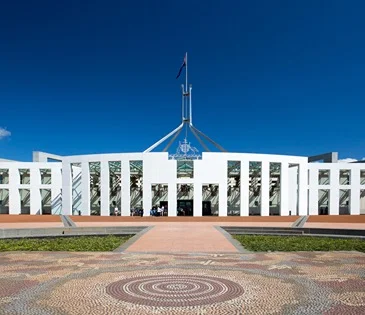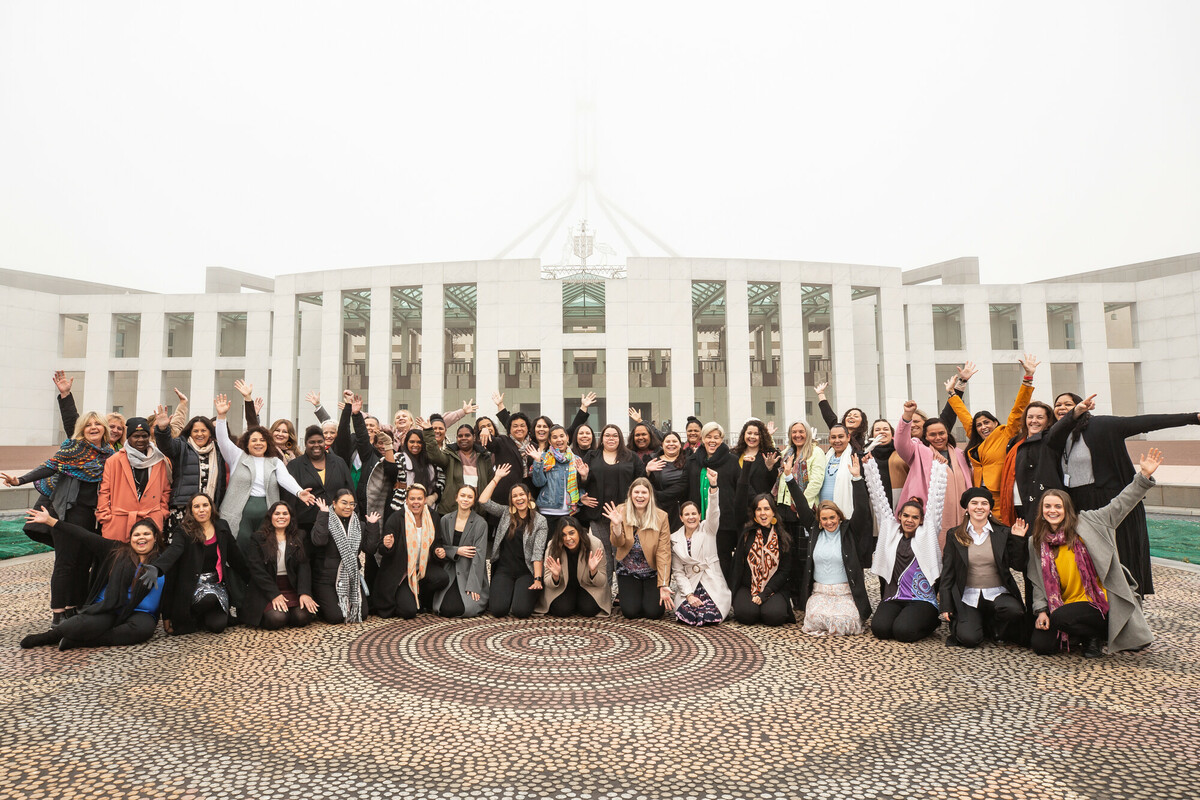Get passionate about politics
Although the Parliament of Australia sits in Canberra, it makes decisions that impact you and how you live your life on a daily basis.
Whether it’s the music you can buy in stores or Australia’s global commitments to climate action, parliamentarians have immense power and responsibility to make laws which reflect the needs and desires of the Australian community.
It is important to remember that, in our democratic system, the role of politicians is to represent us. By electing them, we give them the power to make decisions and laws on our behalf. So, it’s important for them to know what we think and what we want them to do!
Unfortunately, many Australians never attempt to use the democratic power they have. Sometimes, this is because they feel they don’t understand the political system and don’t feel confident enough to contact their Member of Parliament.
Not everyone has the opportunity to learn about politics at school, so it is easy to make it to voting age without fully understanding how elections work, how laws are made or how Parliament operates. The following pages are designed to help you understand the basics and find answers to your questions.
- So what’s the difference between the House of Representatives and the Senate?
- The low-down on law-making – How Bills get to Parliament and how they become law
- Just another day in parliament – Question time, motions, committees, adjournment speeches – everything you ever wanted to know about what happens in Parliament
- It’s party time! – How political parties work and why we have them
- Election fever – How politicians are elected and how governments are formed
- Change your world by voting
So what’s the difference between the House of Representatives and the Senate?
A quick overview of how Parliament is structured
Federal Parliament in Canberra is made up of two ‘houses’ – the House of Representatives and the Senate.
The House of Representatives
The House of Representatives, which is sometimes referred to as the ‘Lower House’, brings together 151 Members of Parliament (MPs) who have been elected to represent electorates right across Australia.
The boundaries of every electorate are carefully mapped out to ensure that each one contains roughly the same number of voters. This means that a state which has more people living in it, such as New South Wales, will also have more electorates and more MPs in the House of Representatives. This is very important to ensure that the vote of every Australian is given the same value. Your local MP is the person elected to represent the area you live in. They are your direct link to the Federal Parliament and travels to Canberra whenever Parliament sits, which is around 20 weeks a year.
Your MP also has an office in the electorate which they work from when Parliament is not sitting. This gives the MP an opportunity to meet with the people they represent – in other words, all the people who live in the MP’s electorate. These people are often referred to as the MP’s constituents. Having a base in the electorate also enables the MP to attend local events and visit local organisations and businesses. For more detailed information about how the House of Representatives works, check out this parliamentary fact sheet.
The Senate
The Senate, or ‘Upper House’, is made up of 76 Senators who are drawn from the six states and two territories within Australia. Each state elects 12 Senators, however, the Australian Capital Territory and the Northern Territory elect only two Senators each.
So, instead of having just one representative, as you do in the House of Representatives, in the Senate you have 12 representatives (or two if you live in a territory). However, you share these Senators with the other people living in your state or territory.
Another point of difference between the House of Representatives and the Senate is that Senators are elected for a term of six years, whereas MPs are elected for a term of three years. For more information on the Senate, check out this parliamentary information sheet.
Why do we need two Houses of Parliament?
There are a number of important reasons why we have two houses of Parliament, as well as some historical reasons.
Before Australia became a federation, it was made up of six colonies, each of which had its own Parliament. In 1901, the six colonies voted in support of a new Constitution which formed the Commonwealth of Australia and established the Parliament of Australia. The six colonies became the six states of Australia and retained their own parliaments.
In becoming a Commonwealth, each of the states wanted to ensure that they would be equally represented and have equal power in the new structure. For this reason, each state was given equal representation in the Senate. This helped to balance the fact that some states with higher populations would have more members in the House of Representatives compared to states with lower populations.
So, the House of Representatives ensures that every Australian is represented equally in Parliament, while the Senate helps to ensure that states are represented equally. This is why the Senate is sometimes called the ‘states’ House’.
The Senate also plays an important role in scrutinising the actions of the government. Because Senators are elected using the proportional voting system (to learn about this, see Election Fever), it is easier for small parties and independent candidates to be elected to the Senate. This means there is often a wider variety of views and positions in the Senate. It also means that the government usually doesn’t hold a majority of the seats in the Senate, so laws can only be passed with the support of another party.
The Senate is also able to review actions of the government and proposed laws through its many committees. To learn more about these, see what happens in parliament.
How you can help
Indigenous women in politics
The Straight Talk program connects Aboriginal and Torres Strait Islander women to the Australian political system to be a voice for important causes in the community.

Oxfam’s Political Parties’ Policy Snapshot 2022
Where do our political parties values lay? Take a look at the Snapshot to see how they align with Oxfam Australia.
Engage in Australian politics
There are various ways to engage with Australian politics. Explore how with the Parliament of Australia.
